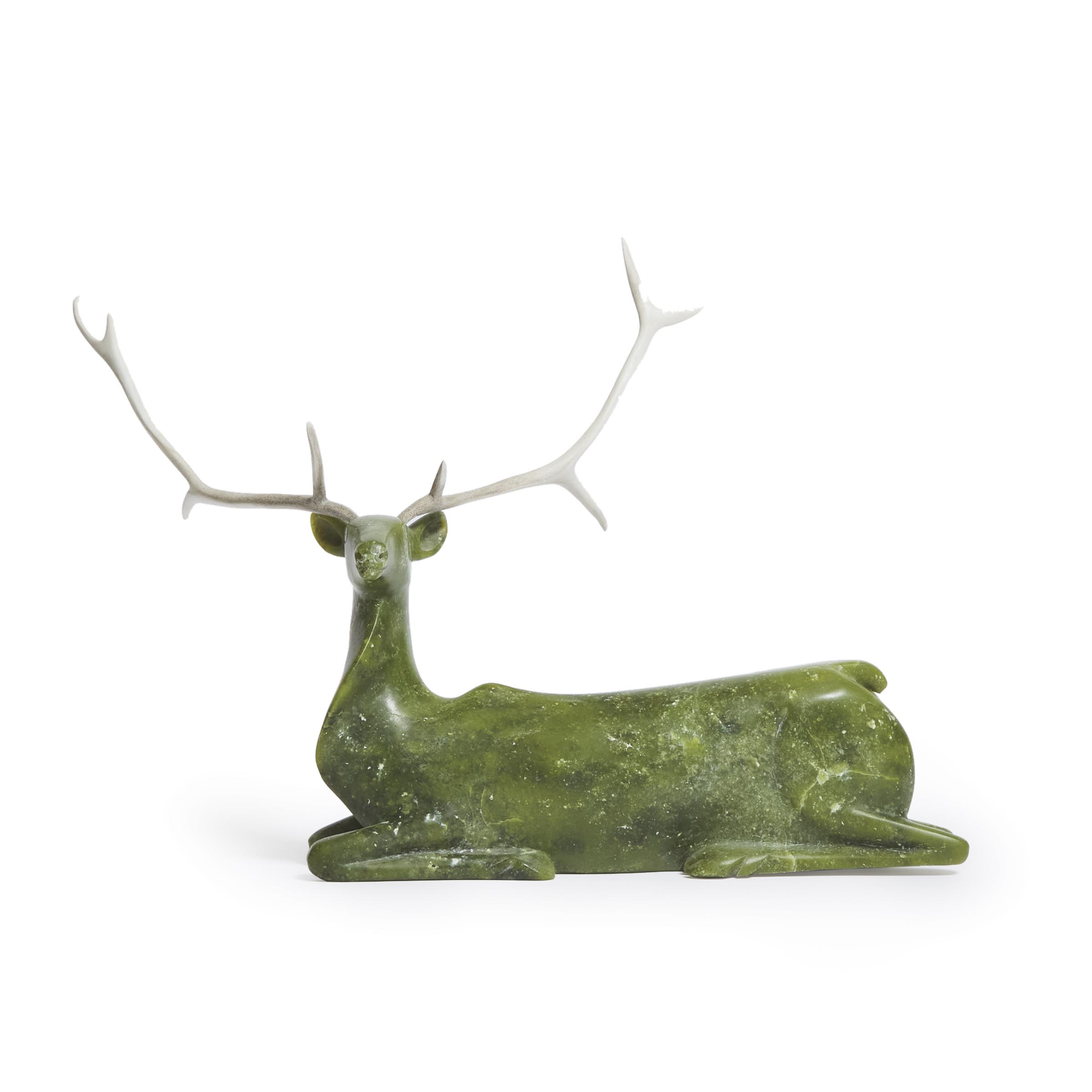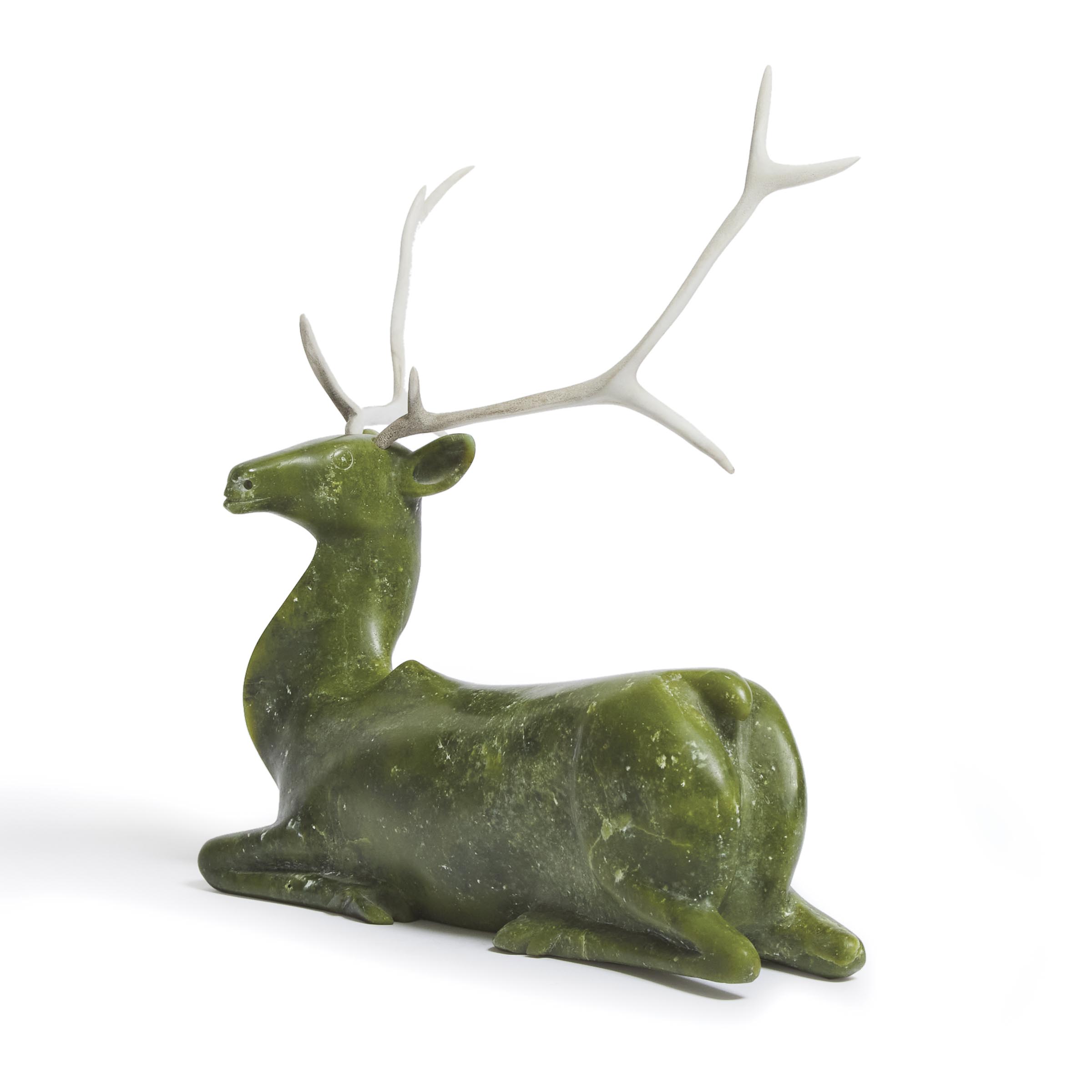Lot 164
Osuitok Ipeelee ᐅᓱᐃᑐ ᐃᐱᓕ, RCA (1923-2005)

Additional Images

Provenance:
Private Collection, Seattle, WA
Literature:
Susan Gustavison, Northern Rock Contemporary Inuit Stone Sculpture, (Kleinburg: McMichael Canadian Art Collection, 1999), 64
Note:
James Houston writes that Osuitok was the "keeper of the carving stone" for his community, helping to select and quarry the raw materials for use in sculptural work. In guiding others, he gained an innate knowledge of the way stone might fracture or break, facilitating the intimate awareness of carving that allowed him to make such slender and graceful sculptures.
The artist details his own practice thusly: “When I’m doing a caribou, I first make the outline of the animal starting with the muzzle, the nose, and then I work my way down to the body. Then I work on the leg areas. The standing caribou are more difficult than the kneeling ones. I work with files when I am doing the legs and ears. The ears are the last thing I do because they tend to break off. So I finish with those.
I don’t use the grinder to make the form because sometimes there are areas that you tend to cut into too deeply, something you’re not supposed to do. I prefer to use an axe and a saw. Also I use files that you use for steel (rasps) and then I switch to files for the finer work.
For balancing I make sure the base is smooth and flat so that the caribou doesn’t tip to the front or side. I just make sure that the bottom of the hooves is perfectly level. I use a level like carpenters use in construction work. I make sure the base is a little bit thick before I start to get it level."
Waddington’s is pleased to offer two of Osuitok’s caribou in this auction, the dramatic





